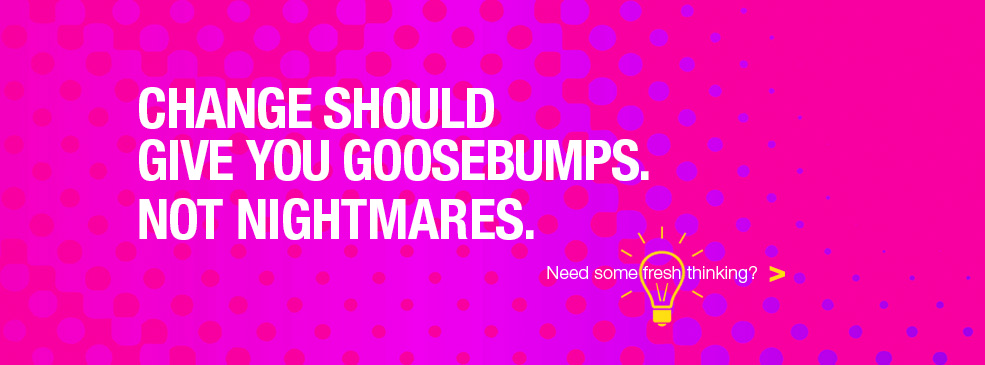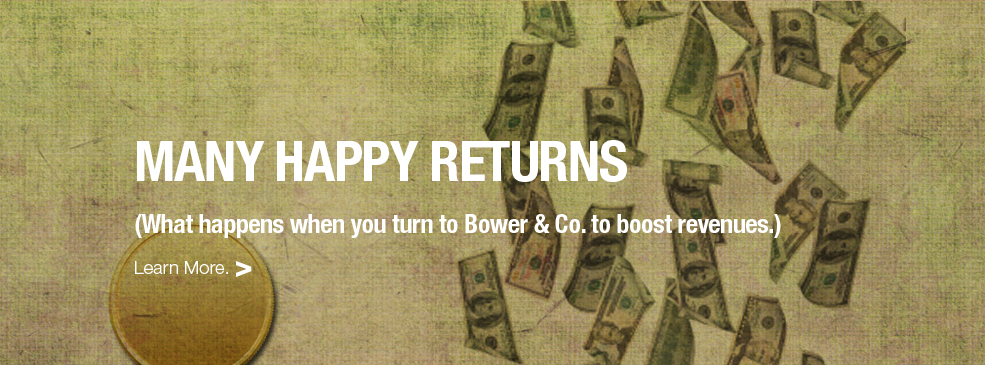Event or Evade?
In Portland, you can put a bird on something and just call it art.
 Portlandia: Put a Bird On ItIf you’re a fan of IFC’s Portlandia, you may have seen the “Put a Bird on It” episode. Bryce Shivers and Lisa Eversman, played by Portlandia co-creators Fred Armisen and Carrie Brownstein, turn ordinary items in a gift shop into art, simply by putting a bird on it.
Portlandia: Put a Bird On ItIf you’re a fan of IFC’s Portlandia, you may have seen the “Put a Bird on It” episode. Bryce Shivers and Lisa Eversman, played by Portlandia co-creators Fred Armisen and Carrie Brownstein, turn ordinary items in a gift shop into art, simply by putting a bird on it.
“What a sad little tote bag,” Lisa Eversman says. “I know, I’ll put a bird on it,” and she sets the tote bag free.
Are you just putting a bird on it?
If you aren’t targeting clear business outcomes for your events, you may be “putting a bird on it.” (Or for you classic movie fans: “Let’s put on a show.”)
We've gotta have a great show, with a million laughs... and color... and a lot of lights to make it sparkle. And songs - wonderful songs. And after we get the people in that hall, we've gotta start 'em in laughing right away. Oh, can't you just see it... ?
--Judy Garland, "Babes In Arms," 1939.
In other words, you may be doing something snazzy (putting a bird on it) or spending a lot of time and energy (putting on a show), but undermining your efforts.
Sometimes organizations and destinations fall into a trap believing that putting on a show will solve all the organizational problems. The event will be the magic bullet that will bring it gobs of money, make their organizations and causes household names, and turn strangers into staunch supporters and steady customers.
Maybe it happens in the movies, but for us, mere mortals, putting a bird on it may be sidetracking your organization’s real goals.
Event Outcomes
Your event is not only a powerful communication medium, it is also a revenue- and brand-building asset. Think of it as a brand extension, with its own P&L statement. Just like any medium or any asset, you have to know how it works so you can set realistic expectations and maximize the full value.
Event outcomes for nonprofit and for profit organizations fall somewhere on a broad continuum, from relationship-building to revenue-generating to purchase reinforcement.
If your organization is considering producing an event, start first with determining what you are trying to accomplish. Then ask yourself a key question: are you willing to invest the human and financial resources, both of which can be considerable, to derive the most value from that investment?
What are you avoiding?
Here’s another way of looking at it. If you’re producing an event but have unclear outcomes, what might you be avoiding?
Avoiding relationships
For example, events are a great mechanism for initiating or fostering client or donor relationships. However, they can also be a great distraction. Just because the individual shows up doesn’t automatically mean you have a relationship. And if 200 people show up to your event, there’s no way you can invest the time and energy to spark up a relationship on demand with each one at the event. You need to work it before and after. You need a plan and relationship strategy. Conversely, do you even need the event in order to cultivate the relationship? Or is it just putting a bird on it?
Avoiding a strategy
Destinations, resorts, and downtown improvement districts often put a bird on it by succumbing to merchant pressure. “Let’s have a show!” they sing, expecting instant traffic and sales in their retail operations.Sometimes the destination would more wisely invest in a strategy to understand its customer base and define its retail strategy. A related problem is merchants who lack a strategy and are unable to convert the event traffic into buyers and then blame the event.
Avoiding a marketing strategy
Organizations do something similar when they produce an event to build visibility and then fail to incorporate the event into a marketing strategy or develop a marketing strategy that features the event. Holding one event per year does not a marketing communications strategy make. Regular, consistent communications can support your efforts and help you with conversions.
As you plan your upcoming events, it’s not too late to take a strategic approach. Don’t just put a bird on it. Put some thought into it.
 Events & Festivals |
Events & Festivals | 






